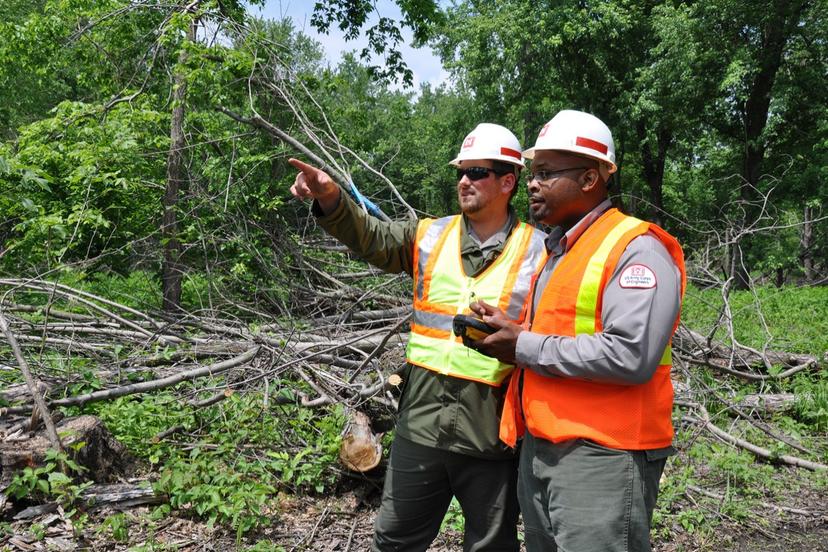Forestry and Forest Products

Structure
The forestry and forest products industry is like a chain composed of several different links, from the foresters and forestry technicians who plant, tend, and harvest trees, to the manufacturing workers who convert raw lumber into finished wood products for consumers to buy and use.
The chain begins in the forests, where the trees are grown for lumber. Trained workers, such as foresters and forestry technicians, decide the types and numbers of trees to be planted, plant and care for them, calculate how much lumber they will provide, and eventually harvest them.
The harvesting of trees is called logging. Logging companies harvest trees in large numbers from designated forests. After an appropriate area has been located and the trees suitable for logging have been marked, the next step in logging is the felling of the trees. The timber faller, often called a cutter, typically uses a chain saw to cut the trees. In many areas of the United States and Europe, much of the logging is done by mechanical harvesters. In mechanical harvesting, trees are felled and bunched by machines called feller/bunchers or shearers. These mechanized operations are decreasing the use of chain saws in the logging process.
Once the trees have been felled, a tractor, or skidder, is used to move them to a clearing, where they are loaded onto trucks or train cars for transport to processing mills. Large trees are bucked, or cut into shorter logs, so they can be loaded more easily. With small trees, only the branches and tops of the tree are removed.
At the sawmill, the logs are turned into lumber. A moving conveyor carries the logs from the truck or train up a chute into the mill. A laser scanner is used to measure the exact dimensions of each log. These dimensions help determine the best lengths in which to cut the wood so that it yields the most valuable lumber. As the logs proceed through the mill on a conveyor, they are usually debarked either by a mechanical debarker or with strong streams of water. The debarked wood is then run through a series of four saws: a bucking saw, a headsaw, a resaw, and a trimmer saw. The bucking saw cuts large logs into shorter lengths. The headsaw slices each log into cants (partly trimmed logs) or other types of lumber. The resaw is then used to cut the cants to the desired thicknesses with straight and even sides. The trimmer saw makes the ends of the boards square and cuts the lumber to standard lengths.
After the lumber is cut by the saws, it moves along a conveyor belt and is manually graded by graders according to quality, size, and type of wood. Hardwoods are usually graded on a scale from one to eight, with one being the highest grade of wood. Softwoods are generally graded from one to five, with one also being the highest grade.
Rough lumber may be transported from the sawmill to other mills that finish and shape the boards and produce lumber products. Often wholesalers buy lumber in large quantities and then resell it to retail lumber yards or other large users of the lumber. The retailers and others then sell the lumber to individual customers.
Seasoning is the process by which moisture is removed from the wood. Since wood cut in the forest has a high moisture content, it is often necessary to make it drier. Lumber can be seasoned by air drying or kiln drying. (A kiln is a large oven used to dry or fire a substance.) In air drying, the lumber is piled outside and left to dry in the sun and wind. Kiln drying is much quicker, but also more costly. Different woods are dried at different temperatures and speeds. Woods are also dried according to where they will be used. For example, wood that will be used in a dry climate will be seasoned to a lesser moisture content than wood that will be used in a moist climate.
Once wood is cut and seasoned, it is ready to be used in the production of various products. Numerous industries use lumber, but the construction and building sector is easily the largest market. A great deal of wood is also used in various manufacturing industries, such as in the making of furniture, cabinetry, toys, or tools. These industries require various types of wood shaped in various sizes.
The final link in the wood industry chain is the marketing and selling of wood products. This area of the industry involves basic business management and marketing techniques, as well as specific knowledge of wood qualities and methods of processing.
